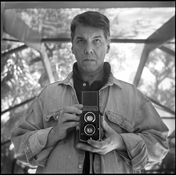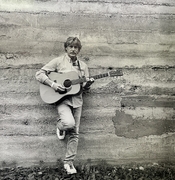If you don't mind an additional, completely unsolicited, suggestion... my experience with the Rollei was vastly improved when I started using a monopod, Rolleifix, and short cable release. Everything improved. Only downside was having to explain to British customs agents, several times, that the monopod was not some sort of sinister "aerial" or weapon.
Ditto on the monopod and short cable release--or that ridiculously expensive original equipment little metal thingy that you can screw in (but works its way out and is lost somewhere in the forest--not that I'm at all bitter). The weakness of the Rolleicord is the release, which moves the camera sideways.
All suggestions, sollicited or not, are welcome
 Thank you both for the advice ! For complicated, personal reasons, using a tripod or a monopod is kind of a pain for me, so I basically never use them. I've heard about the "metal thingy" for the shutter release, but I think I'm gonna wait and see if my pictures come out blurry or not first. For now, my "technique" to avoid movements as much as possible when firing the shutter is : strap around my neck, one hand on each side of the camera, and a slow, gentle movement of the shutter release. But if this is not enough, I'll definitely use a cable release.
Thank you both for the advice ! For complicated, personal reasons, using a tripod or a monopod is kind of a pain for me, so I basically never use them. I've heard about the "metal thingy" for the shutter release, but I think I'm gonna wait and see if my pictures come out blurry or not first. For now, my "technique" to avoid movements as much as possible when firing the shutter is : strap around my neck, one hand on each side of the camera, and a slow, gentle movement of the shutter release. But if this is not enough, I'll definitely use a cable release.




 I shot one at 1/15th,I'm curious to see if it worked or not...
I shot one at 1/15th,I'm curious to see if it worked or not...






